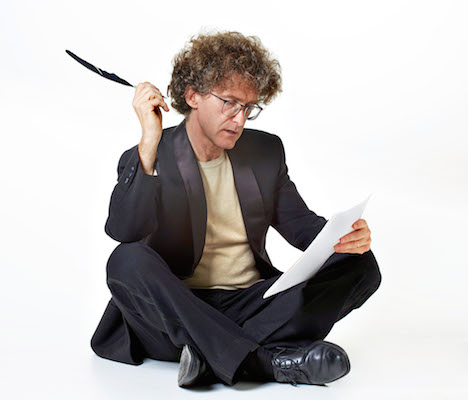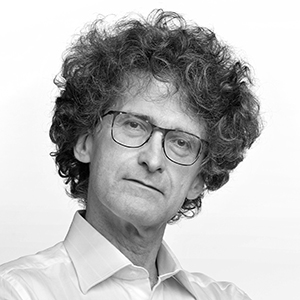In our 2019/20 Season, we are exploring how "old" can meet "new." This theme runs across our season in many ways, including six short new works by living composers written to complement the programs.
We are delighted to introduce Italian composer Guido Morini, whose new work for orchestra, Italian Soundscapes, will premiere this October in Baroque Roots.
Tafelmusik: Tell us a little about yourself, and how you started composing music.

TM: What was the first composition you wrote? What / How / Why?
GM: The first original composition was a trio sonata written in early 17th century Italian style, but the first large work was An Odyssey for three characters, choir, and orchestra, written in 2001.
What inspires you when you start writing a new composition?
GM: When I compose, I write music that I'd like to listen to if I were a member of the audience. Composers must first and foremost be very good artisans!
TM: Can you describe your process for writing a new composition for period instruments?
GM: Getting started is the hardest thing … I always start with a detail, then I try to imagine a story, articulating the "affects" and creating a path that leads the listener to be moved, amazed, and to identify with the music.
TM: If you were introducing someone to baroque music for the first time, what would you get them to listen to?
GM: Easy: J. S. Bach!
TM: What do you hope the audience will take away from the composition you are writing for Tafelmusik? And the flipside, what do you hope to take away from the performance of your work?
GM: I hope that the audience will be simultaneously captivated, amused, and moved by the music. It will be a great pleasure to hear my work performed by exceptional musicians. My music (like baroque music) does not obsessively specify the composer's thoughts but leaves the interpreter plenty of freedom. Who better than Tafelmusik to discover new aspects of my work?
TM: Tafelmusik’s 2019/20 season theme is “Old Meets New.” How do you see your composition tie in with this theme?
GM: "Old meets New" is an important and intelligent initiative. I don’t think there could be a more suitable opportunity for the general characteristics of my music, which is faithful to baroque compositional techniques but devoted to touching the heart of today's listener with wisdom, emotion, and a touch of irony!
Guido Morini introduces Italian Soundscapes
My music is entirely conceived using musical languages of the past. Just as an architect uses only wood and stone for a building instead of steel and concrete, I use the composition techniques of the old masters, ranging from Flemish polyphony to Bach. What interests me is not the rigorous philological reconstruction of old works, but rather the melding of renaissance and baroque cultural heritage with contemporary sensibilities.
The inspiration forItalian Soundscapes is clearly Italian, with three very contrasting movements. The first is a kind of fantasia composed of many different musical ideas that describe the orderly clutter of a wizard's cave, where the oddest, most diverse objects are found within a mysterious, hieratic atmosphere.
The second movement plays with the stereotype of the Italian fannullonewho enjoys lazing about in the sun. This hymn to laziness is occasionally interrupted by frenzied eruptions that disturb his rest, but sleep prevails as the movement comes to a close.
The last movement is a windstorm in the Venice lagoon.
Guido Morini, composer
After studying organ, harpsichord, and composition, Guido Morini devoted himself to the art of basso continuo and improvisation. He ranks among Europe's most acclaimed continuo players, and has worked extensively with several of the leading European musicians, including Jordi Savall, Enrico Gatti, and Gabriel Garrido, among many others.
In 1984, together with Marco Beasley, he founded Accordone, an ensemble with which he explores a new approach to the interpretation of Italian baroque repertoire, and for which he composes new music. An eclectic musician with a deep knowledge of baroque styles, Morini increasingly combines his performing career with his work as a composer, writing instrumental pieces, cantatas, oratorios, and operas.

